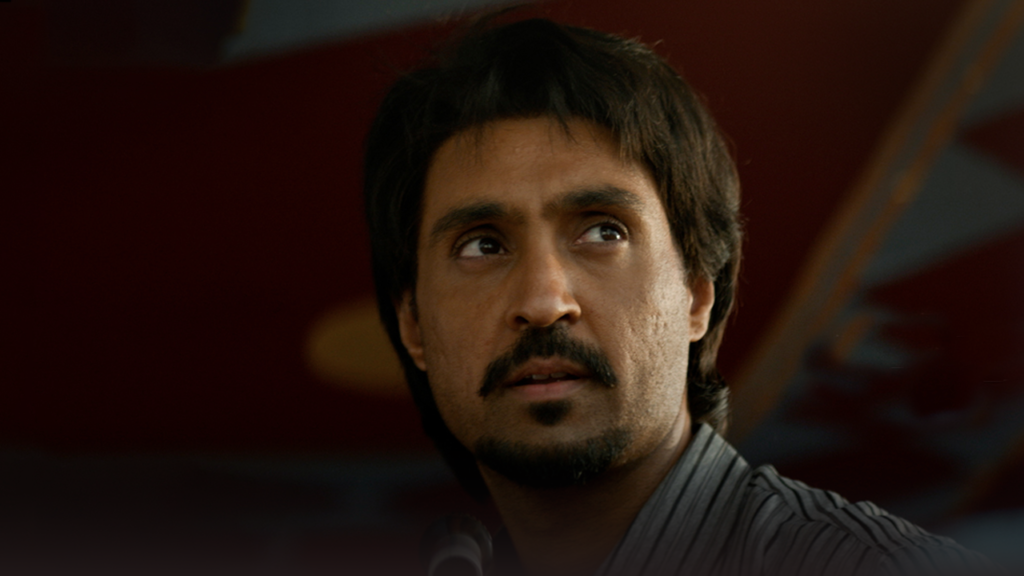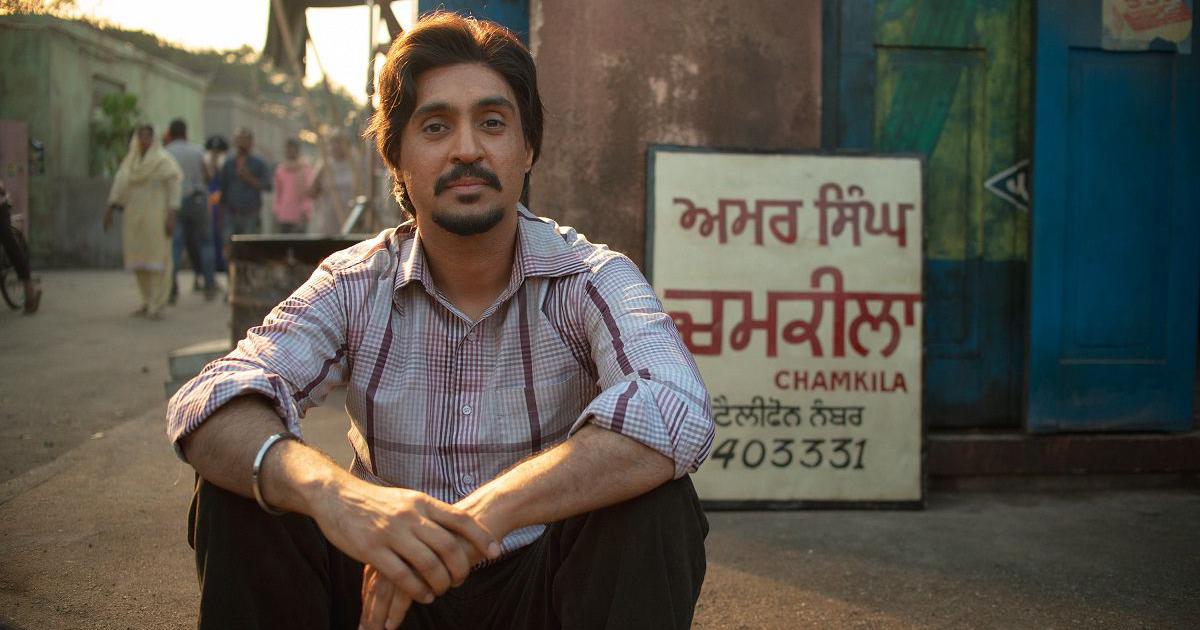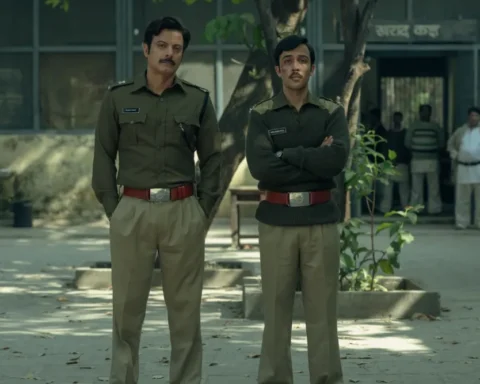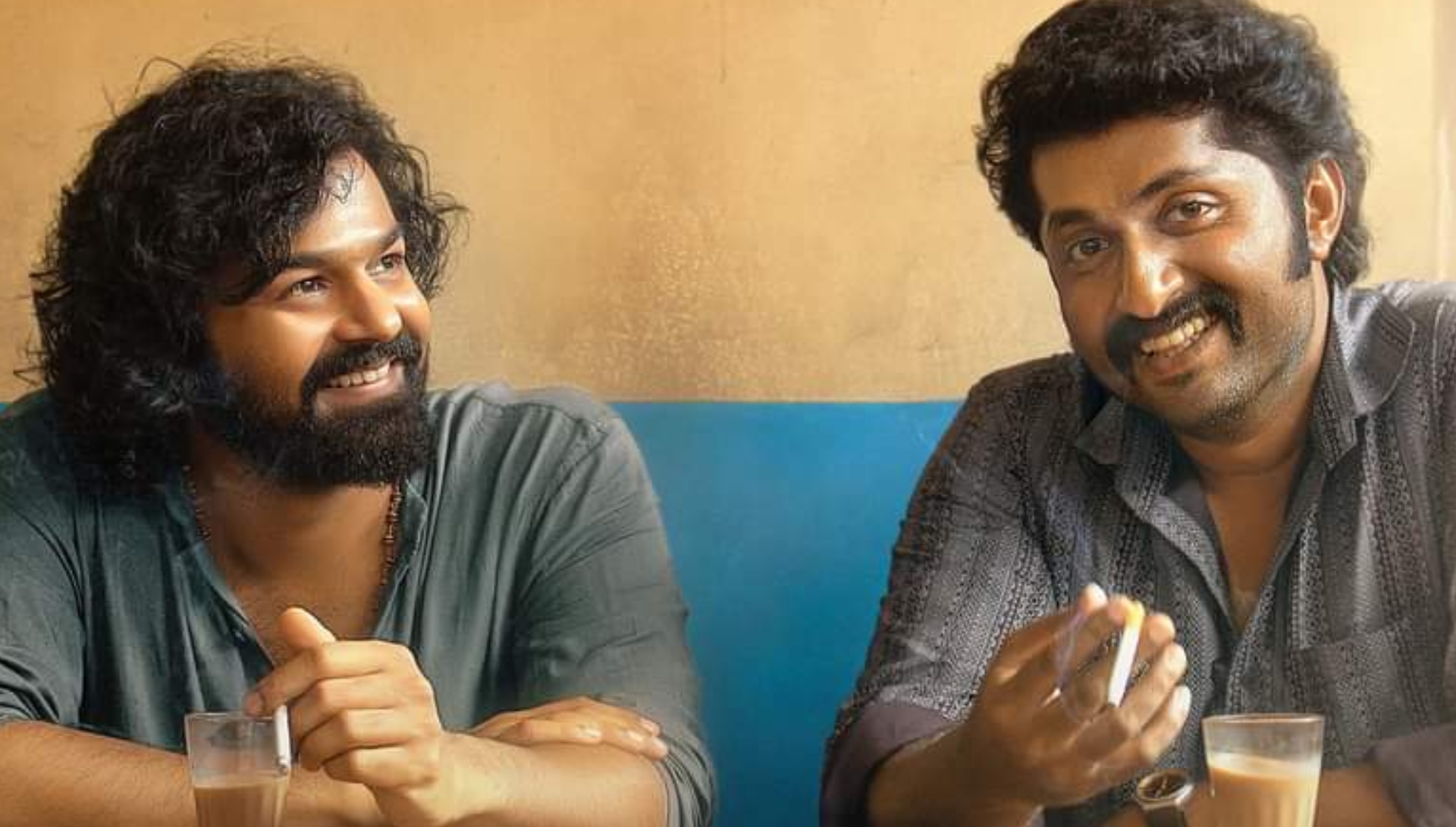Imtiaz Ali’s recent outing, Amar Singh Chamkila, currently streaming on Netflix, is based on the life of a sensational Punjabi singer whose popularity soared beyond the land of five rivers and spread worldwide during the early 80s. It is a tale of courage and grit that stems from a life riled in poverty and obligation, how past experiences have formed an individual, and most importantly, how vulnerable and insecure we can be as a society. The titular protagonist of the film belonged to a low caste of Chamars, whose unshakeable confidence in his music cleared the path for both his success and his murder in broad daylight. Through the key events in the life of the controversial singer, the filmmaker creates a dramatic narration of reality in its clearest sense. Though set in a bygone era, the situation persists in our society where a handful of individuals decide what the citizens should hear and watch. The narrative is imbued with a notable sense of urgency and raw emotional power that is complemented by an appealingly delicate quality and polish. As the film ends, it brings a sense of discomfort, and the unease makes us look into something deeper within ourselves, leaving us questioning our morals and beliefs.
The film begins on a fateful day in 1989 when Amar Singh Chamkila (Diljit Dosanjh) and Amarjot Kaur (Parineeti Chopra) were assassinated in Mehsampur, Punjab. The rest of the film is narrated through flashbacks by two individuals who have witnessed the rapid ascent of the protagonist. The first is Kesar Singh Tikki (Anjum Batra), who was once the manager of the deceased singer duo. Within the comforts of a dive bar, he unravels for eager and drunk listeners the tragic yet inspiring story of the rise and fall of the legendary singer. The other is Kikar Dalewala (Robbie Johal), a colleague of the Chamkila, recounting the prime moments in chronological order to DSP Balbir Singh (Anuraag Arora), who does not hold Chamkila’s songs in high regard. Chamkila worked as a laborer knitting socks in a factory, a job he disliked from the core of his heart. One evening, he meets Tikki and convinces him to arrange a meeting with Jatinder Jinda, a popular singer. Jinda is impressed with Chamkila’s talents and appoints him as his lyricist. However, he never helps Chamkila evolve as a singer. During one of the open-air recitals, when Jinda does not turn up on time, the crowd goes berserk. The organizer uses Chamkila to rescue himself from a difficult situation. He performs for the public for the first time. Despite this, Chamkila had to wait a long time to achieve his dream of becoming a singer. He had to overcome many obstacles and challenges along the way until fortune favored him. He not only becomes a popular public figure but also finds emotional and professional company, pairing with Amarjot. But the path to fame and success exacts its toll.

The lyrics of Chamkila’s songs were vulgar, yet they simultaneously enthralled the masses who gathered in crowds to listen to his live performances. The filmmaker does not attempt to justify Chamkila’s actions as noble, nor does he portray him as someone who merely knows how to excite his audiences. Instead, he prompts us to judge Chamkila for ourselves. At the beginning of the film, it is depicted that the protagonist, as a child, grew up in a village where elders surreptitiously satisfied their sexual urges. Consequently, Chamkila’s songs became a by-product of a culture steeped in hypocritical perspectives. This hypocrisy is further highlighted in a scene where Chamkila refuses to make eye contact with a journalist wearing pants. In response, the journalist accuses Chamkila of not hesitating to write songs that objectify women but having issues looking at a woman in modern attire. Chamkila defends himself by stating that he is a common man and that the reasons for his actions will never be understood by someone who has not experienced his circumstances. Whether this scene exemplifies Chamkila’s double standards or deserves applause is left to the audience’s discretion. The narrative also does not shy away from showcasing the protagonist as a manipulator, which becomes evident when he hides the truth of his first marriage before tying the knot with Amarjot. The reason for the deceit was his desperation to form a pair with her, as their careers as singers would have been destroyed otherwise. He even influences the villagers to his side with his charisma during the panchayat session, where his second marriage was found punishable. Thus, the film is never interested in glorifying the protagonist and presents him in grey shades.
The filmmaker has employed various narrative tools, such as 2D animations, split screens, intercutting real-life photographs and videos, and the redundant captions of the translation of the songs to enhance his storytelling skills and add a flourish to his directorial acumen without appearing gimmicky. Chamkila received threats from different quarters of the society. The gatekeepers of the Sikh religion thought that his songs were besmirching their community. He had to bribe the extremist group with money to avoid harm. The police department viewed him as a sympathizer of the extremist group and was hesitant to proceed with extrajudicial action. The perpetrators of Chamkila’s murder were never caught, leaving the case remain shrouded in mystery. The film does not intend to point fingers at any particular individual; rather, the filmmaker is primarily interested in covering the protagonist’s journey and the impact his songs had on society. Towards the end, the fans continue to dance inside the theatres when Chamkila and Amarjot appear on the big screen, and the legacy endures for eternity. Now, does it matter to identify the assassins of the singer? So, the film becomes a celebration of the life of an artist who lived on his terms, drawing strength from something that was his forte.

Diljit Dosanjh, as Amar Singh Chamkila, understands the psyche of an individual for whom singing was not only a passion but a medium to earn repute. He shades this character with decency, regret, and relatable exhaustion without overplaying the flaws that keep the film from going off the rails. Parineeti Chopra as Amarjot Kaur matches the protagonist beat-for-beat and delivers a performance whose emotional palette ranges between jolliness and barely contained rage, adding detailed, complicating notes. Anjum Batra, as Kesar Singh Tikki, brings the toughness and intelligence of the character who helped the protagonist become a legend. Robbie Johal as Kikar Dalewala, Anuraag Arora as DSP Balbir Singh, and Apinderdeep Singh as Swarn Sivia have also played their roles with steely conviction.
Sylvester Fonseca’s cinematography beautifully captures the vibrant, playful, and tragic moments with simplicity and a diverse range of tones that perfectly capture the background, setting, and theme of the film. The sound design by Dhiman Karmakar intricately weaves the ambience, meticulously laying tracks to match the pulsating spirit of the protagonist. The live recording of the actors singing adds a new dimension to the aural atmosphere, sustaining our interest. The production design by Suman Roy Mahapatra creates an appropriate space, perfectly retaining the period depicted in the story and enhancing the grand canvas of the film. Aarti Bajaj’s editing maintains a seamless flow of events across different timelines, sustaining the mood and tempo to create an evocative rhythm. The music by AR Rahman effectively blends with the story, infusing it with lively, rich, and vigorous moments, lending strength to the film. The lyrics, penned by Irshad Kamil, not only carry melodious tunes but also serve as a vehicle to propel the story forward. Baaja playing during the title credits encapsulates how the late singer is revered by his followers across villages in Punjab. Naram Kaalja reveals the singer’s popularity within women’s circles and is filled with feminine desires. Both songs effectively break the fourth wall, dissolving the barrier of pretension and confronting reality directly, as well as bridging the gap between social conformity and sexual freedom. Ishq Mitaye serves as an explosive track through which Chamkila’s voice acts as a soothing balm in a community facing hardship while also asserting his immortal status. The final song, Vida Karo allows us to mourn the untimely passing of a talent who was christened as the ‘Elvis of Punjab’.
Over the years, Imtiaz Ali has developed a style of allowing the plot points of his films to unfold in a non-linear fashion, where fragmented moments come together to shape the narrative. While this approach brings a unique quality to his films and serves as an organic stylistic device most of the time, it also detracts from our emotional connection with the characters due to the randomness with which scenes are juxtaposed, as was evident in his previous film, Love Aaj Kal (2020). In contrast, with Amar Singh Chamkila, the distraction is less evident, and the emotions are presented in a controlled manner that evokes a sense of realism and authenticity. Overall, it is a very brave film, handled with both maturity and wit, that aims to surprise its viewers rather than conform to predictable formulas.






